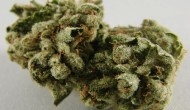Sialochemistry; A Diagnostic Tool

Introduction
A large number of diagnostic analytes have been shown to be present in saliva, including steroid hormones1 and the HIV antibody.2 For the past two decades, oral health researchers have been developing salivary diagnostic tools to monitor oral diseases (including periodontal diseases),3,4 as well as for caries risk assessment5 .These diagnostic advances range from genetic susceptibility analysis of interleukin-1 (IL-1) genetic alleles to the analysis of oral pathogens identified via lectin staining for caries risk assessment.6 The current development of diagnostic biomarkers (via proteomic and genomic approaches) in conjunction with technological developments in salivary diagnostics will lead to the development of robust diagnostic tools for dentists to use in making clinical decisions and predicting treatment outcomes. 7
SALIVA COLLECTION
Whole saliva is a product of secretion of 3 major glands (parotid, submandibular, sublingual) and many minor glands (labial, buccal, palatal). Unstimulated saliva is usually obtained as the patient spits out every 60 sec or by forward bended head, the patient allows saliva to drip off the lower lip into a cylinder. By collection of saliva in the tube the flow rate per unit time can be measured. When volume measurement is not required the saliva can be collected on cotton rolls, gauze or filter paper. For evaluating salivary gland function or when large volumes of saliva are required for analytic purposes, stimulated whole saliva is used. Method of collection is the same as for unstimulated saliva.8
The usual masticatory stimuli are paraffin wax or a washed rubber band. A standard gustatory stimulus is obtained by 2% citric acid applied directly to the tongue every 15 to 60 sec. Parotid saliva can be collected by aspiration from the duct opening with a micropipette. Parotid saliva is best collected with Lashley’s vacuum chamber(fig1& 2)9
Submandibular and sublingual saliva can be collected by cannulation of the duct with micropipette, but in practice this is both uncomfortable for the patients and technically difficult since the duct orifice is mobile and has a strong sphincter. Because of that, alginate and silicone impression material is used for retention of the collecting tube. As alternative and simple technique is to block off secretion from the parotid glands with absorbent swabs and collect mixed submandibular and sublingual saliva by pipette from the floor of the mouth. Saliva from labial and palatal glands can be collected by filter paper disc or disc of other synthetic materials.10 Salivary flow rate is given as ml/min/gland. Under ‘resting’ conditions the flow rate of the parotid gland amounts to 0-0.1 ml/min. After citric acid stimulation the range is 0.5-1.5 ml/min. Stimulated values below 0.3 ml/min are considered pathological. Elevated flow rates will be seen under conditions such as gingivitis, recent prosthesis and dominant cholinergic activity in Parkinson’s disease, intoxication etc. Low values are found during the use of tricyclic
antidepressants, after duct disintegration caused by inflammation or irradiation and after radical surgical treatment. The effects are more dramatic in resting saliva on account of intensified water reabsorption in the resting state.
SIALOCHEMISTRY
The choice of laboratory investigations should be based on presumed relationships with intra glandular transport processes (sodium), intra cellular synthesis (protein, amylase), and diffusion by plasma constituents (urea). Saliva also influences the oral environment in a number of ways. Measurements are given as concentrations c.q. mmol/1. This facilitates the assessment of ion/water shift and osmotic values. Secreted solutes, given as mmol/min or in mg/min (mmol/1 x ml/min), are useful in judging acinar destruction, as in irradiation and aging. Routine laboratory investigations include potassium calcium, sodium, chloride, bicarbonate, urea, total protein, amylase, and osmolarity measurements.
The usual masticatory stimuli are paraffin wax or a washed rubber band. A standard gustatory stimulus is obtained by 2% citric acid applied directly to the tongue every 15 to 60 sec. Parotid saliva can be collected by aspiration from the duct opening with a micropipette. Parotid saliva is best collected with Lashley’s vacuum chamber9
Submandibular and sublingual saliva can be collected by cannulation of the duct with micropipette, but in practice this is both uncomfortable for the patients and technically difficult since the duct orifice is mobile and has a strong sphincter. Because of that, alginate and silicone impression material is used for retention of the collecting tube. As alternative and simple technique is to block off secretion from the parotid glands with absorbent swabs and collect mixed submandibular and sublingual saliva by pipette from the floor of the mouth. Saliva from labial and palatal glands can be collected by filter paper disc or disc of other synthetic materials.10 Salivary flow rate is given as ml/min/gland. Under ‘resting’ conditions the flow rate of the parotid gland amounts to 0-0.1 ml/min. After citric acid stimulation the range is 0.5-1.5 ml/min. Stimulated values below 0.3 ml/min are considered pathological. Elevated flow rates will be seen under conditions such as gingivitis, recent prosthesis and dominant cholinergic activity in Parkinson’s disease, intoxication etc. Low values are found during the use of tricyclic
antidepressants, after duct disintegration caused by inflammation or irradiation and after radical surgical treatment. The effects are more dramatic in resting saliva on account of intensified water reabsorption in the resting state.
SIALOCHEMISTRY
The choice of laboratory investigations should be based on presumed relationships with intra glandular transport processes (sodium), intra cellular synthesis (protein, amylase), and diffusion by plasma constituents (urea). Saliva also influences the oral environment in a number of ways. Measurements are given as concentrations c.q. mmol/1. This facilitates the assessment of ion/water shift and osmotic values. Secreted solutes, given as mmol/min or in mg/min (mmol/1 x ml/min), are useful in judging acinar destruction, as in irradiation and aging. Routine laboratory investigations include potassium calcium, sodium, chloride, bicarbonate, urea, total protein, amylase, and osmolarity measurements.
The diagnostic use of saliva has attracted the attention of numerous investigators because of the noninvasive nature and relative simplicity of collection. Saliva collection also simplifies the diagnostic process in special populations in whom blood drawing is difficult, i.e. individuals with compromised venous access (e.g., injecting drug users), patients with hemophilia and children.
The presence of six enzymes was established in parotid saliva: acid phosphatase, total esterases, cholinesterase, lipase, beta-glucuronidase, and lysozyme. Broth cultures used for this study with whole saliva indicated that all but sulfatase and lysozyme were produced by the oral flora.8
Abnormal proteins are also produced under exceptional conditions, such as the development of tumours and nutritional deficiency. Low a-amylase concentrations are seen in cases of starvation and after destruction and degeneration of the acinar cells. Elevated a-amylase is seen in abnormal ductal water loss. Furthermore, acute inflammation of the glands produces a rise in plasma and urine amylase due to gross glandular leakage. This will be seen in mumps as well as in the presence of a salivary calculus.11Salivary analysis can be valuable to discriminate and monitor swellings of major salivary glands such as chronic recurrent parotitis, where the blood-saliva barrier is violated in the inflammatory flare-ups and characterized by the leakage of serum components (albumin) and lactoferrin into saliva
Higher enzyme activities were found in the adult periodontitis patients compared to the healthy controls for alkaline phosphatase, esterase, β-glucuronidase, β-glucosidase, and other aminopeptidases. Saliva from patients with localized juvenile periodontitis contained the highest levels of butyrate esterase and cystiene aminopeptidase12.
Sialochemistry can be expected to reveal the differentiation between normal and abnormal function of the glands, information about gland dysfunction and its impact on the oral environment, clues to homeostatic fluctuations as a result of circulatory, innervatory, or hormonal adjustments. The development of microchips for salivary components offers great possibilities to use oral fluid for point-of-care testing.13
Another fertile area of application for salivary analysis is in laboratory medicine, where determining and monitoring levels of various hormones (cortisol, progesterone, estriol, testosterone etc.) and drugs (diazepam, caffeine, lithium, theophylline, tolbutamide,
methotrexate, antibiotics, anticonvulsants, etc.) is becoming a conventional procedure. Oral fluid can be used to detect recent use of illicit drugs. Saliva may be used for monitoring patient compliance with psychiatric medications14 A significant correlation exists between the salivary and serum lithium levels in patients receiving lithium therapy.15 Saliva is also useful for the monitoring of anti-epileptic drugs. Salivary carbamazepine levels showed positive correlation with serum levels. In another study, salivary levels of phenobarbital and phenytoin demonstrated excellent correlations with serum levels of these medications. Salivary theophylline concentration demonstrated correlation with serum concentration of theophylline.17 Saliva may also be used for monitoring levels of anti-cancer drugs. Saliva was found to be a reliable alternative to serum for the monitoring of irinotecan levels18. Salivary ethanol concentration may be used as an index of the blood ethanol concentration, provided that the salivary sample is obtained at least 20 min following ingestion. This will allow for absorption and distribution of alcohol, and prevent a falsely elevated reading due to the oral route of consumption.19 Other recreational drugs that can be identified in saliva are amphetamines, barbiturates, benzodiazepines, cocaine, phencyclidine (PCP), and opioids.20 Saliva can also be used to detect recent marijuana use by means of
Radiommunoassay. Monitoring of salivary albumin can assist in the identification of stomatitis at a pre-clinical stage and enable the chemotherapy dosage to be adjusted or treatment for the stomatitis to be initiated at an early stage.
The diagnostic use of saliva has attracted the attention of numerous investigators because of the noninvasive nature and relative simplicity of collection. Saliva collection also simplifies the diagnostic process in special populations in whom blood drawing is difficult, i.e. individuals with compromised venous access (e.g., injecting drug users), patients with hemophilia and children.
The presence of six enzymes was established in parotid saliva: acid phosphatase, total esterases, cholinesterase, lipase, beta-glucuronidase, and lysozyme. Broth cultures used for this study with whole saliva indicated that all but sulfatase and lysozyme were produced by the oral flora.8
Higher enzyme activities were found in the adult periodontitis patients compared to the healthy controls for alkaline phosphatase, esterase, β-glucuronidase, β-glucosidase, and other aminopeptidases. Saliva from patients with localized juvenile periodontitis contained the highest levels of butyrate esterase and cystiene aminopeptidase12.
Sialochemistry can be expected to reveal the differentiation between normal and abnormal function of the glands, information about gland dysfunction and its impact on the oral environment, clues to homeostatic fluctuations as a result of circulatory, innervatory, or hormonal adjustments. The development of microchips for salivary components offers great possibilities to use oral fluid for point-of-care testing.13
Another fertile area of application for salivary analysis is in laboratory medicine, where determining and monitoring levels of various hormones (cortisol, progesterone, estriol, testosterone etc.) and drugs (diazepam, caffeine, lithium, theophylline, tolbutamide,
methotrexate, antibiotics, anticonvulsants, etc.) is becoming a conventional procedure. Oral fluid can be used to detect recent use of illicit drugs. Saliva may be used for monitoring patient compliance with psychiatric medications14 A significant correlation exists between the salivary and serum lithium levels in patients receiving lithium therapy.15 Saliva is also useful for the monitoring of anti-epileptic drugs. Salivary carbamazepine levels showed positive correlation with serum levels. In another study, salivary levels of phenobarbital and phenytoin demonstrated excellent correlations with serum levels of these medications. Salivary theophylline concentration demonstrated correlation with serum concentration of theophylline.17 Saliva may also be used for monitoring levels of anti-cancer drugs. Saliva was found to be a reliable alternative to serum for the monitoring of irinotecan levels18. Salivary ethanol concentration may be used as an index of the blood ethanol concentration, provided that the salivary sample is obtained at least 20 min following ingestion. This will allow for absorption and distribution of alcohol, and prevent a falsely elevated reading due to the oral route of consumption.19 Other recreational drugs that can be identified in saliva are amphetamines, barbiturates, benzodiazepines, cocaine, phencyclidine (PCP), and opioids.20 Saliva can also be used to detect recent marijuana use by means of
Radiommunoassay. Monitoring of salivary albumin can assist in the identification of stomatitis at a pre-clinical stage and enable the chemotherapy dosage to be adjusted or treatment for the stomatitis to be initiated at an early stage.
Radiommunoassay. Monitoring of salivary albumin can assist in the identification of stomatitis at a pre-clinical stage and enable the chemotherapy dosage to be adjusted or treatment for the stomatitis to be initiated at an early stage.
Whole saliva is most frequently used for diagnosis of systemic diseases, since it is readily collected and contains serum constituents derived from local vasculature of salivary glands and reach oral cavity via the flow of gingival fluid. Saliva is increasingly being used as an investigational aid in the diagnosis of systemic diseases that affect the function of the salivary glands and the composition of the saliva, such as Sjögren’s syndrome, alcoholic cirrhosis, cystic fibrosis, sarcoidosis, diabetes mellitus and diseases of the adrenal cortex . As assessed by radioimmunoassay, a glucose tolerance test performed on nine healthy patients produced a positive correlation
between salivary and serum insulin levels .
In addition, the onset and severity of infectious diseases can be determined by monitoring the presence of antibodies to the microorganisms found in saliva. In the past
10 years researchers have demonstrated that saliva tests for anti-bodies to HIV represent a noninvasive alternative to quantification of antibodies in blood for monitoring the efficacy of antiretroviral therapies and disease progression to acquired immunodeficiency syndrome.21
In disease diagnosis, however, saliva has many advantages over both serum and urine. For example, salivary assays for anti-bodies (to viruses and bacteria), unconjugated steroid hormones (e.g. estrogen, testosterone and progesterone), environmental toxins (e.g., cadmium, lead and mercury), tobacco (cotinine) and certain drugs (ethanol, theophylline and lithium) are sufficiently sensitive to accurately reflect the blood concentrations of these substances22.
Methods for determining salivary gland dysfunction include salivary flow rate measurements (sialometry) and analysis of salivary composition (sialochemistry) analysed by using radioimmunoassay (RIA), for which whole saliva (oral fluid) is most frequently used. The concentration of IgA was somewhat elevated (commensurate with reduced flow rate); the levels of IgG, IgM, and albumin were normal. The major functional abnormality of the parotid gland in Sjögren’s syndrome appears to be luminal transport in the ductal region; leakage of serum components is minimal. Sialochemistry can be helpful in differentiating Sjögren’s disease from other diseases of the salivary
gland and in assessing degree of pathologic change.23
p53 antibody is a tumor suppressor protein which is produced in cells exposed to various types of DNA-damaging stress, can also be detected in the saliva of patients diagnosed with oral squamous cell carcinoma (SCC), and can thus assist in the early
detection and screening for this tumor. Higher concentrations of salivary defensin-1 were detected in patients with oral SCC in comparison to healthy controls. 24
The activity of CK (creatinine kinase), LDH, ACP (acidic phosphatase), GGT (gamma glutamyl transferase) in saliva from patients with periodontal disease, before & after treatment (experimental Group 30 samples), & in saliva from periodontally healthy patients (20 samples) were studied. The results showed the elevated levels of these enzymes before the treatment in periodontal patients when compared with healthy patients.25
Radiommunoassay. Monitoring of salivary albumin can assist in the identification of stomatitis at a pre-clinical stage and enable the chemotherapy dosage to be adjusted or treatment for the stomatitis to be initiated at an early stage.
Whole saliva is most frequently used for diagnosis of systemic diseases, since it is readily collected and contains serum constituents derived from local vasculature of salivary glands and reach oral cavity via the flow of gingival fluid. Saliva is increasingly being used as an investigational aid in the diagnosis of systemic diseases that affect the function of the salivary glands and the composition of the saliva, such as Sjögren’s syndrome, alcoholic cirrhosis, cystic fibrosis, sarcoidosis, diabetes mellitus and diseases of the adrenal cortex . As assessed by radioimmunoassay, a glucose tolerance test performed on nine healthy patients produced a positive correlationbetween salivary and serum insulin levels .
10 years researchers have demonstrated that saliva tests for anti-bodies to HIV represent a noninvasive alternative to quantification of antibodies in blood for monitoring the efficacy of antiretroviral therapies and disease progression to acquired immunodeficiency syndrome.21
In disease diagnosis, however, saliva has many advantages over both serum and urine. For example, salivary assays for anti-bodies (to viruses and bacteria), unconjugated steroid hormones (e.g. estrogen, testosterone and progesterone), environmental toxins (e.g., cadmium, lead and mercury), tobacco (cotinine) and certain drugs (ethanol, theophylline and lithium) are sufficiently sensitive to accurately reflect the blood concentrations of these substances22.
Methods for determining salivary gland dysfunction include salivary flow rate measurements (sialometry) and analysis of salivary composition (sialochemistry) analysed by using radioimmunoassay (RIA), for which whole saliva (oral fluid) is most frequently used. The concentration of IgA was somewhat elevated (commensurate with reduced flow rate); the levels of IgG, IgM, and albumin were normal. The major functional abnormality of the parotid gland in Sjögren’s syndrome appears to be luminal transport in the ductal region; leakage of serum components is minimal. Sialochemistry can be helpful in differentiating Sjögren’s disease from other diseases of the salivary
gland and in assessing degree of pathologic change.23
p53 antibody is a tumor suppressor protein which is produced in cells exposed to various types of DNA-damaging stress, can also be detected in the saliva of patients diagnosed with oral squamous cell carcinoma (SCC), and can thus assist in the early
detection and screening for this tumor. Higher concentrations of salivary defensin-1 were detected in patients with oral SCC in comparison to healthy controls. 24
The activity of CK (creatinine kinase), LDH, ACP (acidic phosphatase), GGT (gamma glutamyl transferase) in saliva from patients with periodontal disease, before & after treatment (experimental Group 30 samples), & in saliva from periodontally healthy patients (20 samples) were studied. The results showed the elevated levels of these enzymes before the treatment in periodontal patients when compared with healthy patients.25
Study conducted in 273 workers, who were divided into non passive & active smokers based on salivary cotinine levels on 0, 1-7 & >8 mg/ml respectively. Levels of salivary markers, including IL-1b, lactoferrin, albumin were elevated in passive smokers compared to non smokers, were independently associated with cotinine level. They concluded that passive smoke exposure leads to elevation of IL-1b, albumin and aspartate aminotransferase (AST) levels in saliva.26
Patients with heart diseases were divided into 2 groups: Warfarin user & Warfarin non-user, and six components of saliva: salivary total protein (TP), albumin(ALB), C-reactive protein (CRP), aspartate aminotransferase (AST), alanine aminotransferase (ALT), creatine kinase (CK) were determined to assess intra oral pathologic conditions. As a result there were many cases showing a high ALB, CRP, AST and ALT level in Warfarin user and significant correlation found between clinical parameters and salivary components.12
Increased levels of circulating and salivary cortisol (the stress hormone) result from the activation of the hypothalamic–pituitary–adrenal axis brought on by psychological stress and extensive physical activity. Salivary proteins can also maintain an ecological balance among the diverse bacteria that affect oral and general health. Recent studies have shown that several species of oral streptococci, such as Streptococcus gordonii, bind to salivary alpha-amylase immobilized onto hydroxyapatite surfaces. Thus amylase, as a receptor for streptococcal adhesion to the tooth, contributes to the formation of dental plaque.16
Significant decrease of sodium in sialadenosis, and increase of sodium and total protein in sialadenitis have been found.27Typical respiratory pathogens, such as Streptococcus pneumoniae, Streptococcus pyogenes, Mycoplasma pneumoniae and Haemophilus influenzae, colonize the dental plaque of intensive care patients and residents of nursing homes. Once established in the mouth, these pathogens can be aspirated into the lung and cause a nosocomial infection. saliva samples were tested for the presence of H. pyloriDNA by polymerase chain-reaction (PCR) assay, and sensitivity of 84%was reported. Atkinson found that the saliva of HIV-positive patients contained increased levels of histatins and increased levels of lactoferrin.28 Several salivary and oral fluid tests have been developed for HIV diagnosis. Orasure® is a testing system that is commercially available in the United States and can be used for the diagnosis of HIV. The test relies on the collection of an oral mucosal transudate (and therefore IgG antibody). IgG antibody to the virus is the predominant type of anti-HIV immunoglobulin. ELISA may offer a valuable complement to conventional diagnostic methods for pneumococcal pneumonia. Detection of this antigen in saliva demonstrated a sensitivity of 55% and specificity of 97%.
Significantly lower levels of lactoferrin, were found in resting saliva of children with chronic protein-energy malnutrition. Non- insulin dependent diabetics were shown to have increased levels of lactoferrin. Lactoferrin content was also increased in parotid saliva of irradiated patients.29
Parotid and submandibular gland secretions collected from patients with rheumatoid arthritis or systemic sclerosis have been analysed and the results compared with healthy individuals. Saliva samples assayed for amylase, kallikrein, protein, and salivary IgA concentration. The results showed that only patients with rheumatoid arthritis had a reduced salivary flow, especially parotid flow, with a significantly increased concentration of salivary IgA in both parotid and submandibular saliva. Patients with systemic sclerosis did not show significantly altered salivary flow rates, but there was a marked depletion of salivary IgA.30
Saliva may also be used for determining immunization and detecting infection with measles, mumps, and rubella. The detection of antibodies in oral fluid samples produced sensitivity and specificity of 97% and 100% for measles, 94% and94% for mumps, and 98% and 98% for rubella, respectively, in comparison with detection of serum antibodies for these viruses investigators suggested that reactivation of herpes simplex virus type-1 (HSV-1) is involved in the pathogenesis of Bell’s palsy and reported that PCR-based identification of virus in saliva is a useful method for the early detection of HSV-1 reactivation in patients with Bell’s palsy. The shed HSV-1 virus was detected in 50% of patients with Bell’s palsy.
Acute hepatitis A (HAV) and hepatitis B (HBV) were diagnosed based on the presence of IgM antibodies in saliva. Analysis of oral fluid samples collected with Orasure® provided an excellent method for the diagnosis of viral hepatitis B and C. Sensitivity and specificity of 100% for the detection of antibodies for both diseases in oral fluid in comparison with serum antibodies were reported. Sialochemistry has also been used for screening for hepatitis B surface antigen (HbsAg) in epidemiological studies.31
Saliva can be used for the detection of oral candidiasis, and salivary fungal counts may reflect mucosal colonization. Saliva may also be used for the monitoring of oral bacteria. Bacteria (including anaerobic species) can survive in saliva, and can utilize salivary constituents as a growth medium. Increased numbers of Streptococcus mutans and Lactobacilli in saliva were associated with increased caries prevalence and with the presence of root caries . Saliva can serve as a vector for bacterial transmission, and also as a reservoir for bacterial colonization. Detection of certain bacterial species in saliva can reflect their presence in dental plaque and periodontal pockets. Antibodies against viruses and viral components can be detected in saliva and can aid in the diagnosis of acute viral infections, congenital infections, and reactivation of infection .
High-impact diseases, including cancer, cardiovascular disease, and neurological disease, are challenging to diagnose without supplementing clinical evaluation with laboratory testing. Even with laboratory tools, definitive diagnosis often remains elusive. The Oral Fluid NanoSensor Test (OFNASET) technology platform combines cutting-edge technologies, such as self-assembled monolayers (SAM), bionanotechnology, cyclic enzymatic amplification, and microfluidics, with several well-established techniques including microinjection molding, hybridization-based detection, and molecular purification. The use of the OFNASET helps multiplex detection of salivary biomarkers for oral cancer.32
A nanoparticle that signals when cells are undergoing apoptosis triggered by cancer therapies. The new nanoparticles could finally provide oncologists with a rapid assay that could tell them that a given therapy is working.
c-erbB, also known as Her2/neu is a prognostic breast cancer marker which is overexpressed in malignant breast tumors detected in serum. A study done to determine the c-erbB marker in saliva was found to be more reliable which initiated the opportunity for the use of salivary c-erbB as a diagnostic media for detection of carcinomas33 .
The UCLA laboratory recently discovered that discriminatory and diagnostic human mRNAs are present in the saliva ofhealthy people and people with disease. The salivary transcriptome offers an additional valuable resource for disease diagnostics. The first report of the salivary transcriptome demonstrated that the normal salivary transcriptome consists of about 3,000 mRNAs. Of particular importance is that of the 3,000 mRNAs, 180 are common between healthy subjects, constituting the normal salivary transcriptome core (NSTC). To demonstrate the diagnostic and translational potential of the salivary transcriptome, the UCLA group profiled and analyzed saliva from patients with oral cancer. Four genes from the NSTC (IL-8, ornithine decarboxylase, spermidine acetyltransferase and IL-1ß) were able to discriminate and predict whether a saliva sample was from a patient with cancer or from a healthy subject, with a sensitivity and specificity of 91 percent each characteristic (Figure 5). The group has validated these salivary transcriptome biomarkers for oral cancer detection in approximately 300 subjects. The behavior of these salivary transcriptome biomarkers is consistent i.e their levels are significantly higher in the saliva of patients with oral cancer than in the saliva of matched control subjects. 25 However, before a salivary diagnostic test can replace a more conventional one, the diagnostic value of a new salivary test has to be compared with accepted diagnostic methods. The usefulness of a new test has to be determined in terms of sensitivity, specificity, correlation with established disease diagnostic criteria, and reproducibility.
It is becoming increasingly apparent to investigators and clinicians in a variety of disciplines that saliva has many diagnostic uses and is especially valuable in the young, the old and in large scale screening and epidemiologic studies. The saliva has found use as a diagnostic aid in an increasing number of systemic diseases that can affect salivary gland function and composition Changes in salivary flow rate may affect the concentration of salivary markers and also their availability due to changes in salivary pH. . In addition, many serum markers can reach whole saliva in an unpredictable way (i.e., GCF flow and through oral wounds).These parameters will affect the diagnostic usefulness of many salivary constituents .Whole saliva also contains proteolytic enzymes derived from the host and from oral micro-organisms). These enzymes can affect the stability of certain diagnostic markers. Some molecules are also degraded during intracellular diffusion into saliva.
Different diseases that have inflammatory processes in common will show the same changes in their sialochemical patterns and are very sensitive. At the same time, the specificity regarding classified diseases is low. Therefore a correct diagnosis will always require a full clinical and laboratory investigation. However. sialochemistry is a useful means of chronologically, monitoring qualitative and quantitative changes.
References
1. Lundgren T,Twetman S,Johansson I,Crossner CG. Saliva composition in children
and young adults with Papillon-Lefèvre syndrome. J Clin Periodontol
1996;23(12):1068-72 .
2. Watanabe S, Dawes C. The effects of different foods and concentrations of citric
acid on the flow rate of whole saliva in man. Arch Oral Biol 1988; 33(1):1-5.
3. Mandel ID. The role of saliva in maintaining oral homeostasis. J Am Dent Assoc
1989; 119(2):298-304.
4. Gaudette D, North L, Hindahl M, Griffin K, Klimkow N, Thieme T Stability
of clinically significant antibodies in saliva and oral fluid. J Clin Immunoassay
199417:171-175.
5. Kuru B,Yilmaz S,Noyan U: Toward molecular based diagnostics for the oral cavity.
J Am Dent Assoc 1998; 129(8):1138-43.
6. W.M.Edgar: Saliva: its secretion, composition and functions. British Dental Journal
1992 .25; 305-312.
7. Howard H. Chauncey: Salivary enzymes. The Journal of the American Dental
Association Vol 63, September 1961; 42-50.
8. Fabian Lionetti, Richard A.Winer, and Vincent F.Lisanti; Enzymes of human saliva.
Determination, distribution, and origin of whole saliva enzymes: J.Dent.Res. 1954.
321-334
9.Elliaz Kaufman, Ira B Lamster. Diagnostic applications of saliva. Crit Rev Oral
Biol Med.2002,13(2): 197-212.
10. Mandel ID.The diagnostic uses of Saliva. J Oral Pathol Med 1990:19:119-25
11. Schiødt M, Thorn J. Criteria for the salivary component of Sjögren’s
syndrome. A review. Clin Exp Rheumatol. 1989. 7:119-122.
12. Turner RJ, Paulais M, Manganel M, Lee SI, Moran A, Melvin JE (1993). Ion and
water transport mechanisms in salivary glands. Crit Rev Oral Biol Med.1993.
(3&4):343- 350.
13.Siegel IA The role of saliva in drug monitoring. Ann NY Acad Sci1993.
20:694:86-90.
14. El-Guebaly N, Davidson WJ, Sures HA, Griffin W .The monitoring of saliva
drug levels: psychiatric applications. Can J Psychiatry.1981.26:43-48.
15. Ben-Aryeh H, Laor R, Szargel R, Gutman D, Naon H, Pascal M, et al.
Saliva for monitoring of patients with primary affectivedisorders. Isr J Med Sci
1984.20:197-201.
16. Kankirawatana P Salivary antiepileptic drug levels in Thai children. J Med
Assoc Thai .1999. 82:80-88.
17. Kirk JK, Dupuis RE, Miles MV, Gaddy GD, Miranda-Massari JR, Williams DM
Salivary theophylline monitoring: reassessment and clinical considerations.
Ther Drug Monit 1994. 16:58-66.
18. Takahashi T, Fujiwara Y, Sumiyoshi H, Isobe T, Yamaoka N, Yamakido M).
Salivary drug monitoring of irinotecan and its active metabolite in cancer patients.
Cancer Chemother Pharmacol .199740:449-452.
19. McColl KEL, Whiting B, Moore MR, Goldberg A Correlation of ethanol
concentrations in blood and saliva. Clin Sci .1979. 56:283-286.
20. Cone EJ Saliva testing for drugs of abuse. Ann NY Acad Sci.1993. 694:91-127.
21. Shugars DC, Slade GD, Patton LL, Fiscus SA. Oral and systemic factors associated
with increased levels of human immunodeficiency virus type 1 RNA in saliva. Oral
Surg Oral Med Oral Pathol Oral Radiol Endod .2000; 89(4):432-40.
22. Mandel ID. The diagnostic uses of saliva. J Oral Pathol Med 1990; 19(3):119-25.
23. Eliaz Kaufman,ira B. Lamster. the diagnostic applications of saliva. A review .Crit
Rev Oral Biol Med .2002.13(2 ):197-212,
24. Mizukawa N, Sugiyama K, Fukunaga J, Ueno T, Mishima K, Takagi S, et al.
Defensin-1, a peptide detected in the saliva of oral squamous cell carcinoma
patients. Anticancer Res.1998. 18:4645-49.
25. Nahir AM, Szargel R, Scharf J, Ben-Aryeh H, Laufer D, Scharf Y Chemical
analysis of whole saliva in Sjögren’s syndrome. Ann Rheum Dis..2002.46:654-57.
26. Sreebny LM . Salivary flow in health and disease. Compend Suppl 1989.13:461-
469.
27. McGregor JA, Jackson GM, Lachelin GC, Goodwin TM, Artal R, Hastings C, and
other. Salivary estriol as risk assessment for preterm labor: a prospective trial. Am J
Obstet Gynecol 1995; 173(4):1337-42.
28. Malamud D. Oral diagnostic testing for detecting human immunodeficiency
virus-1 antibodies: a technology whose time has come. Am J Med.1997.102:9-14.
29. Valdez IH,Atkinson JC,Ship JA,Fox PC.Major salivary gland function in patients
with radiation-induced xerostomia:flow rates and sialochemistry.Int J Radiat Oncol
Biol Phys 1993;25(1):41-7.
30. Patinen P, Bjorksten F, Malmstrom M, Savilahti E, Reunala T Salivary and
serum IgA antigliadin antibodies in dermatitis herpetiformis. Eur J Oral Sci
1995. 103:280-284.
31.Mortimer PP, Parry JV. The use of saliva for viral diagnosis and screening.
Epidemiol Infect 1988.101:197-201.
32.Oral Fluid Nanosensor Test (OFNASET) with Advanced Electrochemical-Based
Molecular Analysis Platform. Oral-Based Diagnostics Vol. 1098: 401–410
2007.
33.Charles S,Lenora B, Tracy D,Xaoli D,Jason C,Ashley C,Albert K, and Tate T.Reliability assessment of soluble c-erbB-2concentrations in the saliva of healthy women and men.oral surg oral med oral pathol oral radiol endod 2001;91:174-9.
Fig.5 collection of saliva in floor of the mouth by suction
Fig.6 Apoptosis detection Fig.7 Nanosensor detector
Authors
Dr.Mangala Meti
Related Posts

Marijuana Vs Alcohol – Who is still debating this?
While the legal gap decreases with every state victory, there remains a prevalent misconception that marijuana is a... Read More »

AAA Headband MMJ Strain Review
Name: AAA Headband SOURCE: CanniCorner.com TYPE: Hybrid PRICE: $55 per 1/8th Loompa Farms Ricochet Gallery Collective AROMA: The scent... Read More »

Why I’m Voting Yes on D and Yes on F – The Fate of Medical Marijuana in LA
Yes stoners, you read that correctly. On May 21st, I’ll be voting yes on both of the competing... Read More »









